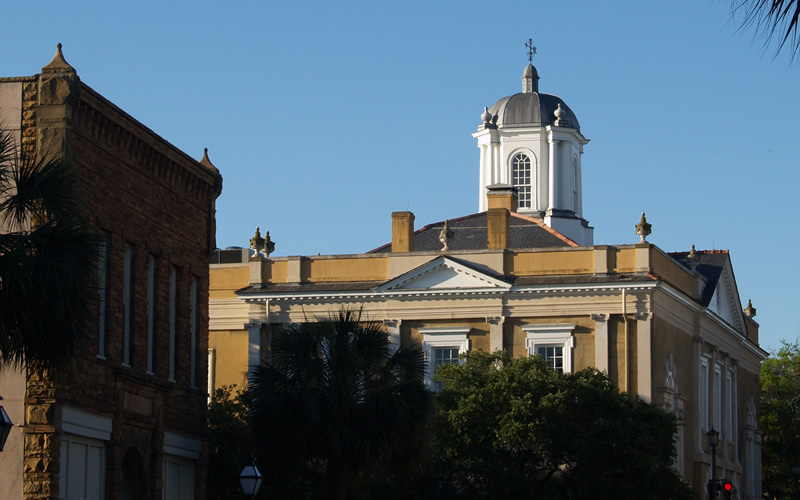S.C. Encyclopedia | One of the grandest and most significant public buildings constructed in colonial America, the Exchange and Customs House at 122 East Bay was designed by William Rigby Naylor in 1766 and constructed by Peter and John Adam Horlbeck between 1767 and 1771 on the site of the earlier “Court of Guard” and Half-Moon Battery. The original design included a cellar, a first-floor open arcaded piazza, and a large second-floor assembly room. The roof was hipped with a parapet and lead-coated cupola.
During the colonial era, royal governors were greeted at the east portico, the front of the building facing Charleston harbor. On December 3, 1773, a large gathering of Charlestonians met there to protest British tea taxes. While the British occupied Charleston from 1780 to 1782, many prominent citizens were confined in the cellar as political and military prisoners. After 1783 the Exchange became City Hall and was the site of South Carolina’s convention to ratify the federal Constitution in 1788. The building also hosted visits to Charleston by George Washington in 1791 and the Marquis de Lafayette in 1825. Later architectural changes included removal of the west stair wings, enclosure of the arcaded piazza, and stuccoing of the Flemish bond exterior. For much of the nineteenth century it served as a post office.
Threatened by demolition, the Exchange became the property of the Rebecca Motte Chapter of the Daughters of the American Revolution in 1921. It was designated a National Historic Landmark in 1975. Since 1976 the building has been administered by the Old Exchange Building Commission. A renovation undertaken as part of the American bicentennial observance returned the building to use in 1981. The Exchange Building was subsequently operated as a museum dedicated to the preservation and interpretation of the history of the Old Exchange, the city of Charleston, and colonial and antebellum America.
— Excerpted from an entry by John Laurens. This entry hasn’t been updated since 2006. To read more about this or 2,000 other entries about South Carolina, check out The South Carolina Encyclopedia, published in 2006 by USC Press. (Information used by permission.)




 We Can Do Better, South Carolina!
We Can Do Better, South Carolina!
























